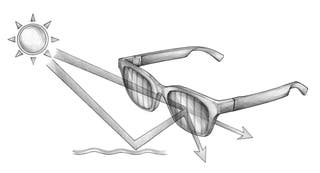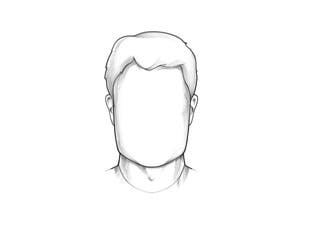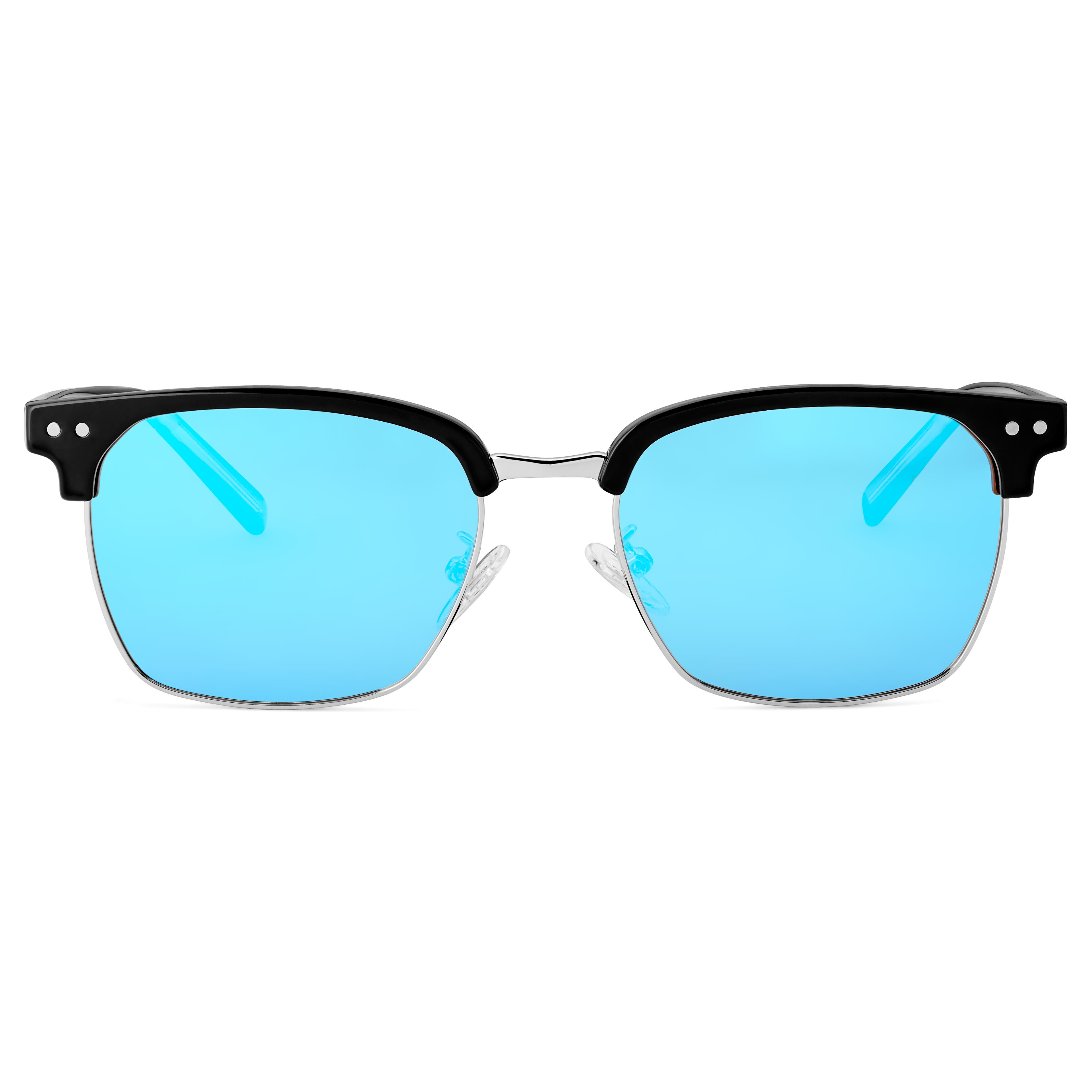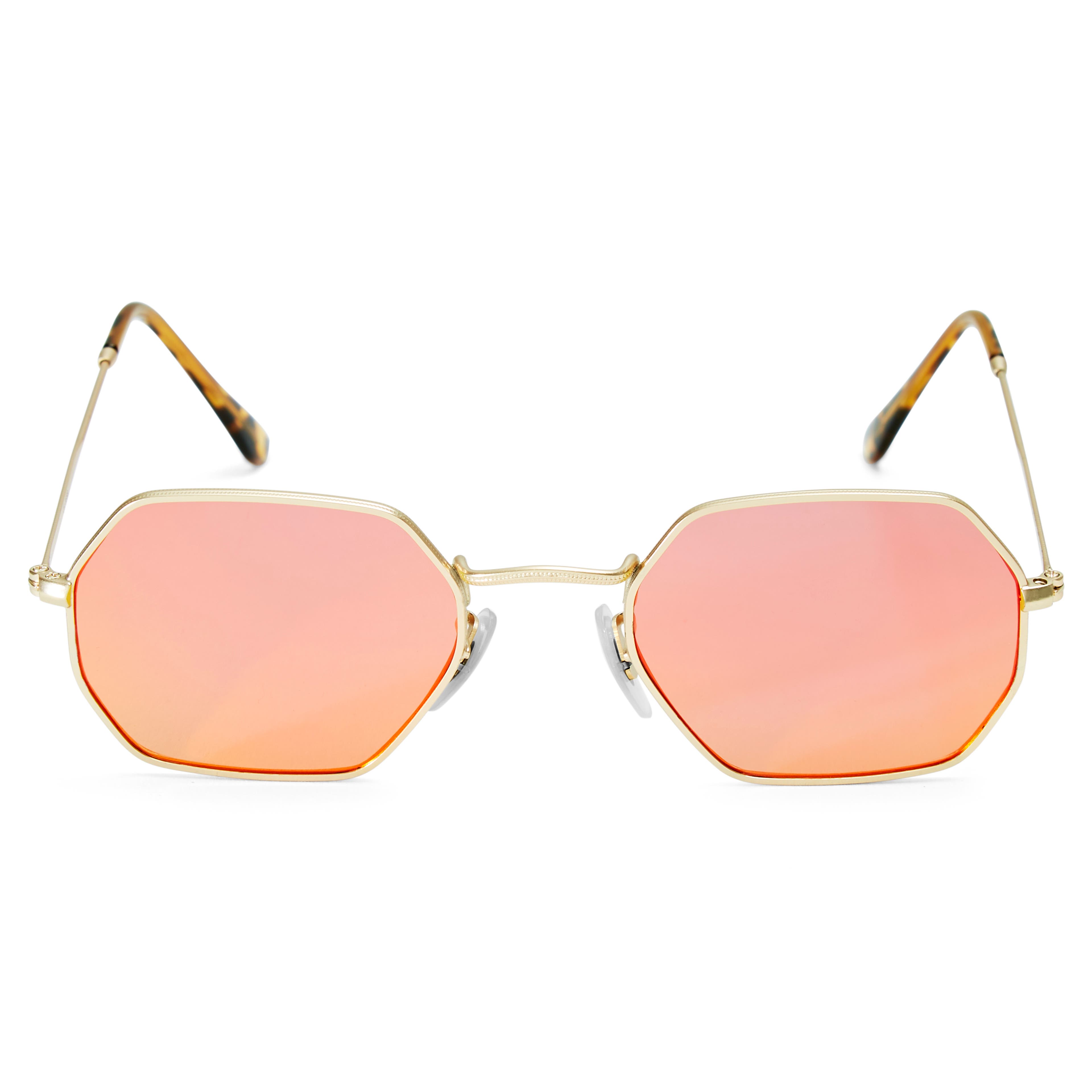Occhiali da sole – Proteggi i tuoi occhi dal sole
Sia che tu stia programmando una giornata in spiaggia, un'escursione o stai semplicemente andando a lavoro, proteggere i tuoi occhi è importante quanto proteggere la pelle dai raggi nocivi del sole.
Quando eri bambino, le tue estati erano soffocate sotto uno strato di protezione 50, continuamente riapplicato ogni volta che uscivi dall'acqua da tua madre?
Non aveva tutti i torti, diciamoci la verità...
Proteggersi dai dannosi raggi UV del sole è il modo migliore per ridurre il rischio di cancro della pelle e invecchiamento precoce. Ma la protezione solare va oltre una buona applicazione di crema.
Non solo indossare degli occhiali da sole ti permette di avere un bel look, ma rappresenta anche una delle cose più importanti che puoi fare per proteggerti dai dannosi raggi solari. Scegliere un modello online può non essere sempre facile. Ma con la giusta consapevolezza di cosa cercare, sarai in grado di vedere il mondo più chiaro in pochissimo tempo.
Prima di decidere lo stile e le caratteristiche, concentriamoci sul motivo principale che ti spinge ad indossare un paio di occhiali da sole: la protezione solare.
La sicurezza prima di tutto. Tua madre sarà così orgogliosa.
Occhiali da sole con protezione UV
Il sole rilascia energia in molte forme. Ma sono i raggi ultravioletti (UVA e UVB) a cui dovremmo prestare particolare attenzione.
Con lo strato di ozono che si esaurisce lentamente (a causa dei cambiamenti climatici), aumenta la quantità di raggi UVA e UVB che raggiungono la Terra. Questi raggi influenzano l'occhio e possono aumentare il rischio di cataratta e di altre patologie come il cancro agli occhi o la fotocheratite.
Nello stesso modo in cui plastica e giornali diventano gialli quando esposti al sole per lunghi periodi, anche l'esposizione prolungata al sole colpisce la pelle sensibile.
E tue che pensavi che mettere la protezione solare sul naso fosse sufficiente.
Quando indossare occhiali da sole con protezione UV?
Secondo l'OMS, il sole estivo è più intenso tra le 9:00 e le 15:00 quando il 75% della quantità giornaliera di radiazioni UV colpisce la superficie terrestre. Aggiungi la natura riflettente della neve, dell'acqua o della strada e probabilmente stai ricevendo il doppio delle radiazioni.
Proteggi i tuoi occhi con occhiali da sole durante le ore di punta dalle 9:00 alle 15:00.

Ricorda che i danni del sole si verificano anche in primavera, autunno e inverno. Indossa occhiali da sole anti-UV e un cappello a tesa ogni volta che sei al sole. Un modo semplice per ricordare è più breve è l'ombra, maggiore è l'esposizione ai raggi UV nocivi.
Ma non farti ingannare da una giornata nuvolosa. I raggi UV sono determinati e possono passare attraverso le nuvole.
Tips to shop for sunglasses for men with UV protection
Always read the description when shopping for sunglasses with UV protection and buy a pair that blocks 99-100% of UVA and UVB rays. Keep in mind that UV-blocking does not mean polarisation. Polarised sunglasses will be described as such.
What does UV400 protection mean? This means they block UV waves shorter than or equal to 400 nanometers. All UV waves (UVA, UVB and UVC) are shorter than or equal to 400 nm and are blocked by the lenses.
Think of UV400 as full protection from all of the sun’s UV radiation.
Are sunglasses with 100% UVA/UVB protection better than those with UV400 protection? No, you are protected with either pair. Both block harmful UVA and UVB radiation and offer the protection your eyes need.
UV rays reach your eyes from all sides… not just the front. Consider that when deciding between wrap around sunglasses and tiny round ones.
Despite what clever ads say, the following has no role in UV protection:
- Cost – Even cheap sunglasses can offer 100% protection from harmful UV radiation.
- Lens Colour & Darkness – The lenses of sunglasses are treated with UV-absorbing chemicals so they can block harmful UV. As these chemicals are colourless,
sunglasses with clear lenses can block harmful UV radiation just as well as dark-coloured shades. - Polarisation – Polarised sunglasses are designed to reduce glare from reflected light, not block UV rays. Fortunately, most sunglasses at Trendhim offer both 100% UV protection and polarisation.
Polarised Sunglasses
We Danes wait all year for the longer days of our brief summer… and then squint through it because we forgot how blinding a bright shaft of sunlight can be.
While polarised lenses may keep you from squinting, they don’t provide protection from UV rays. Glare reduction and UV protection are 2 different treatments given to a pair of sunglasses. Check the description and make sure your next pair includes both.
What are Polarised Sunglasses?
Polarised sunglasses have, you guessed it, polarised lenses. These add another level of protection for your eyes by reducing glare from reflecting horizontal light.
Sunglasses with polarisation are particularly helpful when outdoors near the water or snow and when driving on a snowy or bright day.
How do Polarised Sunglasses work?
We’re not physicists, but we know that light usually scatters at varying angles when it bounces off an object's surface. This happens when objects have an uneven surface.
If the surface is smooth – like the highway in front of you, the beach on a calm day or the glass on a windshield – then light reflects at one angle… the one directly in your eyes.
That's what glare is. Class dismissed.

Polarised sunglasses have lenses with a special chemical applied that filters light by creating vertical openings. This means that only light rays that come to your eyes vertically can fit through.
Think of this chemical and its molecules like the slats on a Venetian blind. The slats on the blind only allow light that passes through the ‘slats’ to be seen. The other light gets blocked.
Polarised lenses do the same thing...but vertically. Vertical light reaches your eye, while horizontal light waves – glare – gets blocked. As a result, what you see with polarised sunglasses is a bit darker than usual, but details will be easier to see and look crisper.
When should you wear polarised sunglasses?
Just as the risks of sun-related eye damage are greater at certain times, so are the risks of glare.
Water, snow and cars can reflect light into your eyes and, since reflected UV can damage the skin and eyes as much as direct UV, be like a double dose of harmful rays. The European Code Against Cancer warns that snow reflects up to 85% of UV and water between 5-10%.
You may have difficulty seeing images on LCD (liquid crystal display) screens like your smartphone, car dashboard or ATM. Not a big problem unless you’re flying a plane and want to see the monitors clearly. On behalf of all passengers, take off the shades.
How to choose the best polarised sunglasses
Just like shopping for sunglasses with UV protection, it’s important to read the description.
- Go For 100 – The single most important thing to look for when buying polarised sunglasses is if they also block 100% of UV rays.
- Think Big – If you’re truly going for safety, consider wrap around sunglasses to reduce UV entering the sides.
- Ignore Colour – Dark lenses or ones with a mirror coating may look stylish, but that alone won’t reduce glare or save your sight.
- Forget About the Price Tag – Men’s sunglasses don't have to cost a fortune to do their job. Choose the pair with 100% UV protection and polarised lenses… not the price tag.
Men’s Sunglasses & Style
In case it’s not crystal clear yet… the best men’s sunglasses are the ones with total protection from the sun’s harmful UV rays and reduce glare with polarised lenses.
Now that you know what to look for, the question turns to what style of sunglasses look the best on you.
Sunglasses & Face Shape
Shopping for sunglasses online isn’t as easy as walking to the high street and trying on a zillion pairs.
We asked professional MUA and stylist, Cianne Denize for her tips on choosing the right pair of sunglasses for the 4 main categories of face shape – square, oval, round and heart – without needing to try them on.
Oval Face Shape

What is an oval face shape? “An oval face is one where the length is longer than the width of the cheekbones. This guy also has a wider forehead compared to his jawline.”
Sunglasses for an Oval Face Shape “It’s a well-balanced face shape and looks good with most styles of sunglasses.
The best pair should highlight the strong points of your face and downplay the weaker ones. This means that guys with an oval face should add angles to the soft curves.
Shop for sunglasses that are geometric, rectangular or slightly square like aviator sunglasses.”
Square Face Shape

What is a square face shape? “The square face shape is characterised by a strong jawline and defined cheekbones.”
Sunglasses for a Square Face Shape “When shopping for sunglasses for a square face, choose round rims to soften your bold features. Shop for teardrop-shaped or round lenses.
Sunglasses with thinner frames, like ones made from metal, make the face appear softer without losing the masculinity that the square face shape gives off.
Avoid square or rectangular shapes because they make your head look short by highlighting the angles of your face. And nobody wants a short head.”
Round Face Shape

What is a round face shape? “Men with a round face have a lot in common with the oval. It's characterised by soft features and a slightly curved jawline and browline.
The cheekbones are usually larger and the small forehead is almost symmetrical to the jawline.”
Sunglasses For A Round Face Shape “Go for angles! The key to sunglasses for men with round faces is to make the face look longer.
If you have a round face shape, rectangular and square frames break up the softness, slim the cheeks and help your face appear thinner and longer.
Angular and geometric sunglasses add sharper lines to create balance between the round curves of your face and the clean lines of the frames. For men, wearing thicker frames also adds width.
Men’s sunglasses with gradient lenses add another level of elongation.
Avoid round sunglasses or any pair that highlights the roundness and curves of the face.”
Heart Face Shape

What is a heart face shape? “Men with heart-shaped faces have wide foreheads and brows compared to their cheekbones and pointed chins.
Some stylists consider this to be the most versatile of all face shapes, but I think the oval face shape is just as easy to find sunglasses for.”
Sunglasses For A Heart Face Shape “Men blessed with a heart-shaped face look best in medium-sized sunglasses that balance out the small chin and large forehead and brow.
Aviator sunglasses look great and have a broader bottom half that balances out the width of the chin.
I suggest avoiding darker colours because they cut up the line of the face. Instead, go for rimless or light-coloured frames. If you don’t like rimless, choose a thin metal frame.
And don’t buy round sunglasses because they draw attention to the forehead and make it appear larger.”
What if your face isn’t perfect?
What happens when your face shape includes a feature that you’re self-conscious about?
We asked Cianne Denize for style tips she’s used on everything from Netflix series to magazine editorials.
- Large Nose – “For men with a big nose, wear browline sunglasses. This draws attention toward your eyes and ears and away from your nose.”
- Large Forehead – “If you’re worried about your forehead getting all the attention, go for a pair of aviator sunglasses. This style looks good on most face shapes and distracts from a big forehead.”
- Narrow Eyes – “If your eyes are close together, wear a pair of sunglasses with clear frames. Avoid anything too wide or you’ll end up looking cross-eyed.”
- Small Face – “When you want to make your face appear longer, grab a pair of rimless sunglasses or ones with a high nose bridge. These draw attention to the edge of your face in all directions.”

What Sunglass Lens Colour is Best?
While the tint and colour of a pair of sunglass lenses aren’t as important as UV protection or polarisation, the colour you choose will affect how much visible light reaches your eye and how well you see other colours.
Dark colours – grey and brown – are great for everyday activities. The darker the shade, the more it reduces eye strain in bright conditions.
- Grey is a popular colour found on most sunglasses for men and allows the eye to see colour in its purest form.
- Amber and brown lenses may distort colour to a certain degree, but these tints appear to increase contrast against green and blue backgrounds such as grass and sky.
Light colours – yellow, orange and rose – are best suited for moderate to low-level light and are often found in wrap around sunglasses and other sport sunglasses for men.
- Yellow and orange-coloured lenses can increase contrast and make objects appear sharper.
- Rose-coloured lenses, like yellow and orange, provide good depth perception and enhance contrast, making your surroundings appear brighter.
How to Clean Your Sunglasses
How many of us are guilty of breathing on our sunglasses and rubbing with our shirt?
While this may get rid of the smudge you’re after… there’s an increased risk of scratching the lens.
Using a paper towel or a napkin is just as bad. Since both of these are basically wood, they’re highly abrasive and leave your sunglasses dustier than when you started.

The best way to clean sunglasses...
- Clean the nose pads first. The parts that actually touch your face are probably the dirtiest. These include the nose rests, temples and rims. Wipe these with a non-abrasive microfiber cloth.
- Rinse with water. Run a sink full of warm water and add a couple of drops of mild, moisturiser-free dishwashing liquid. Place the sunglasses in to remove all the dirt, sand and grime. Gently rub your fingers over the lenses for any leftover sun cream or oil.
- Dry. Remove from the water and dry with a clean, lint-free microfiber cloth.
How to Remove Scratches From Sunglasses
Well, this is awkward. Unfortunately, once your shades are scratched, they’re scratched.
With your next pair, follow the cleaning instructions above to reduce the chances of scratches.
You Asked – We Answered
Are cheap sunglasses bad for your eyes? Are expensive sunglasses better?
The most important factor when shopping for men’s sunglasses is whether or not they offer 100% UV protection.
Look at the description. If they offer the protection and polarised lenses you’re after, the high or low price is probably due to the brand, the material or other design features.
Are clip on sunglasses just as good as normal shades?
Clip on sunglasses are great for people with prescription lenses or a favourite pair of blue-light blocking glasses.
As long as your clip on sunglasses provide 100% UV protection and polarisation, you’re set.
Should sunglasses cover your eyebrows?
For men, the top of the frame should follow the line of your eyebrows. Too much eyebrow above your sunglasses gives you a permanently surprised look.
Should I get polarised sunglasses?
If you snow ski, water ski, golf, fish, play outdoor sports, bike or even drive, you should consider getting a pair of polarised sunglasses.
As far as vision is concerned, glare can be both annoying and dangerous. Having a shaft of light stab you in the eye as it reflects off the car in front is dangerous.
Since many sunglasses for men come with polarised lenses, it’s not an issue of choosing UV protection over glare-reduction. And with countless styles to choose from, it’s an even easier decision to make.
Will older sunglasses still protect my eyes?
If you’ve been wearing your favourite pair of sunglasses for years, you may wonder if they’re still able to protect against harmful UV.
Research doesn't provide a clear, direct answer. If you know you bought them with 100% UV protection, the only way to know if they still work is to take them to an optical shop and have them tested.
Or… save the trip and get a new pair just to be safe.
When should you not wear sunglasses?
If the importance of protecting your eyes from harmful ultraviolet light isn’t obvious by now… then you need your eyes checked.
On the other hand, research has found that people exposed to higher levels of light in the morning tend to sleep better than those who don’t. This is because sunlight helps to set the body’s natural internal clock and regulate sleep.
Research suggests that going without sunglasses until around 9:00 in the morning is a good idea… unless you’re staring at the sun or working/playing in extremely bright conditions with high levels of glare.



















































